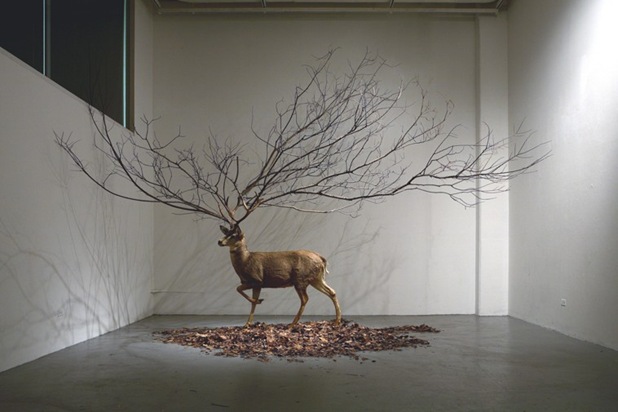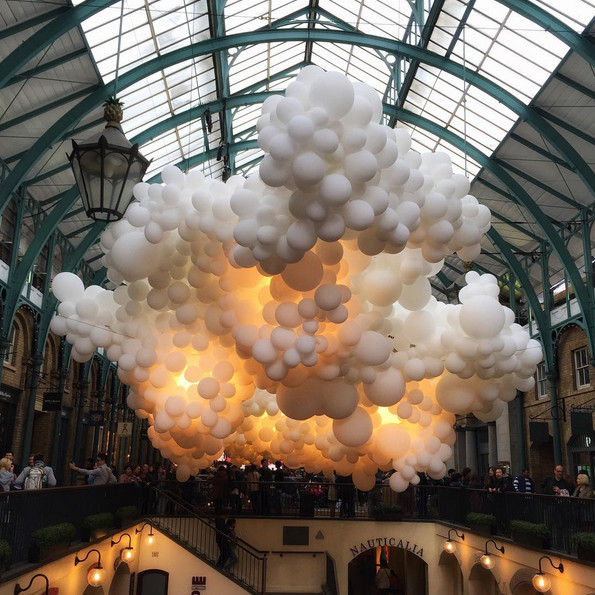Installation Art?
As we prepare for the first exhibit of 2019, we’ve gotten the question “What is installation art?”. The term “installation” is relatively new in its use, and in its definition as an artistic concept, that definition can be broad and ever changing. While the term “installation” may be difficult to succinctly express, we put together this basic outline of installation art to help explain our upcoming group exhibition, Immersion, running at the Brea Gallery February 9th – April 5th, 2019.
An installation piece is typically a three-dimensional visual artwork, configuration of objects in a space, with the resulting arrangement of material and space comprising of the "artwork". Installations often occupy a large area that the spectator can walk through or around in order to fully engage with the work. Specificity can be key in installation art - some installations are created for, and depending on, a particular exhibition location and can be designed to change the perception of that space. It can be participative, substantial, dynamic, theatrical and immersive.
What makes installation art different from sculpture or other traditional art forms is that it is an overall experience, rather than a display of separate, individual artworks. The artist’s focus is on how the viewer experiences the work. Because an installation usually allows the viewer to enter and move around the configured space and/or interact with some of its elements, it offers a very different, intense, and full experience for the viewer. It may even engage several of the viewer's senses including touch, sound and smell, as well as vision.
From the 1960s to the 1990s, the creation of installations have become a major strand in modern art with installation being classified as “conceptual art”. Conceptual art focuses on ideas rather than objects. If a traditional work of art allows us to appreciate the craftsmanship of the artist, an installation allows us to experience the artwork and may even prompt us to rethink our attitudes and values. As conceptual art, most installation artworks have a low intrinsic value: their real value is the artistic effect they produce. A note: an installation is a purely temporary work of art. Unless it is photographed or documented in some way, there is no evidence of its existence!
What is used to make installation art? Almost any type of material or media can be utilized, including natural or man-made objects, painting and sculpture, as well as recent media such as film, animation, various forms of photography, live performance art (including happenings), sound and audio. Light and sound have remained fundamental to installation art.
Who makes installation art? A few pioneers of the installation are movement include Allan Kaprow, Yves Klein, Perry Hoberman, Wolf Vostell, David Rokeby, Jeffrey Shaw, Maurice Benayoun, Ai Weiwei, Kara Walker, Judy Chicago. Featured in Immersion at the Brea Gallery are Darel Carey, Barbara Holmes, Olga Lah, Tahiti Pehrson, Lily Reeves, Paige Smith, Laura Stewart, Corrie Sullivan, Carrie Ungerman, and Amanda Yamashita.
Because installation art is easier experienced than explained, make sure you stop into Immersion at the Brea Gallery to see for yourself!
February 9th, 2019 through April 5th, 2019
Wednesday - Sunday 12pm - 5pm
$3 General Admission, $2 for Seniors, Military, and Students (with valid ID)
FREE Admission for Brea Residents and Children Under 12





![Immersion Q&A [Question and Artist]: Amanda](https://images.squarespace-cdn.com/content/v1/58bb213420099e5b48771d3b/1546633948763-YHFDA90WDOGI2U9BEU3D/Yamashita_Wrapt.jpg)
![Immersion Q&A [Question & Artist]: Olga](https://images.squarespace-cdn.com/content/v1/58bb213420099e5b48771d3b/1549245269924-SYMCIUN53CMOHSZT2I9G/Olga+Lah+3.jpg)